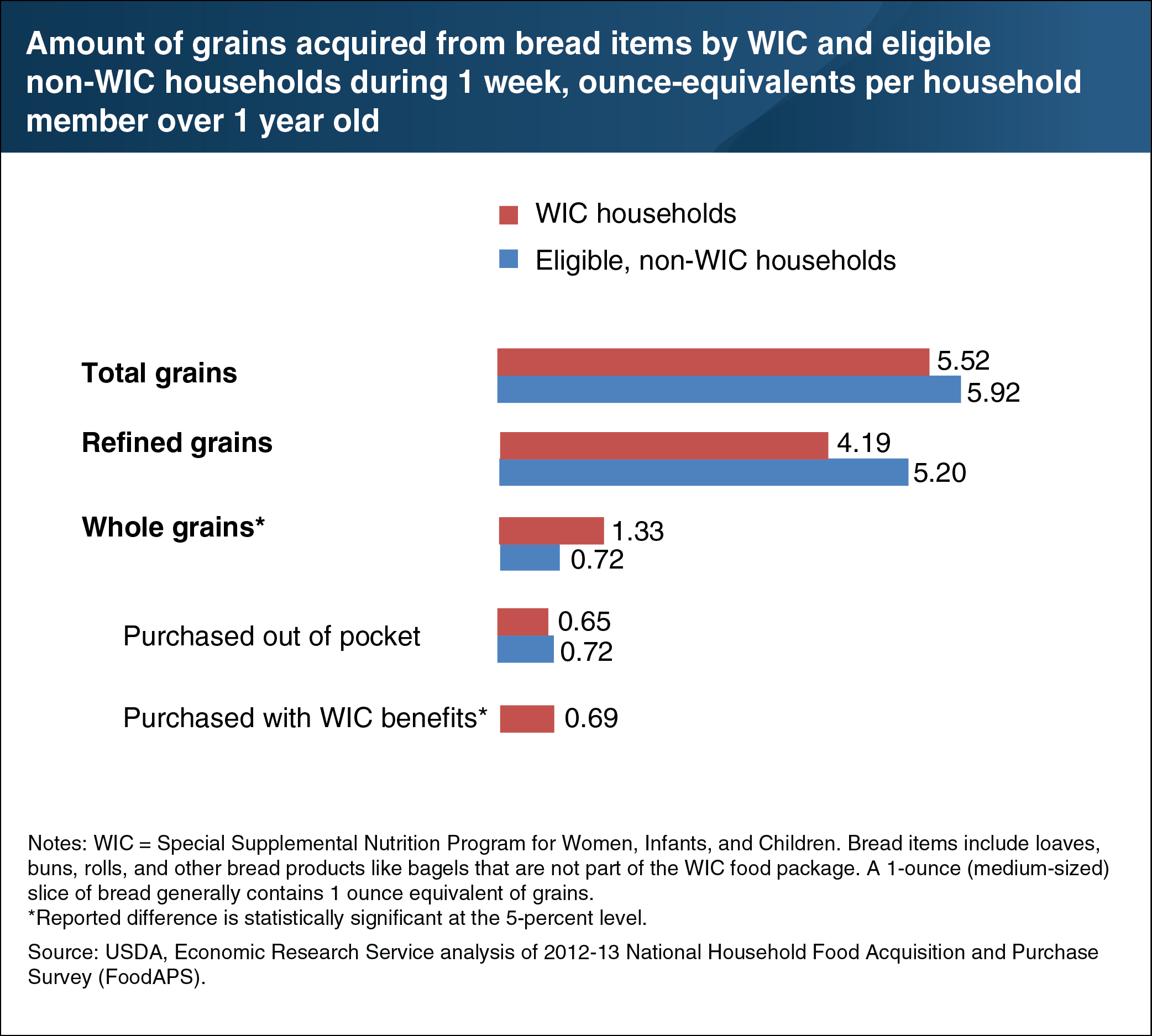WIC households acquire more whole grains from bread items than eligible households not participating in WIC
- by Hayden Stewart and Katherine Ralston
- 9/25/2019

In 2009, USDA’s Special Supplemental Nutrition Program for Women, Infants, and Children (WIC) added whole-grain bread and other whole-grain options, such as brown rice and whole-grain tortillas, to its supplemental food packages for pregnant women, breastfeeding women, and children ages 1 through 4 years old. Most Americans underconsume whole grains relative to Federal dietary recommendations. ERS researchers used USDA’s National Household Food Acquisition and Purchase Survey (FoodAPS) to compare the amounts of whole and refined grains acquired from bread by WIC and eligible non-WIC households. During the FoodAPS survey week, WIC households acquired about the same amount of total grains from bread as eligible non-participants. However, they bought more whole grain bread. WIC households acquired 1.33 ounce-equivalents of whole grains from bread per member, on average, versus 0.72 ounce-equivalents for eligible non-WIC households. This difference can be attributed to purchases of whole grain bread made with WIC benefits. This chart appears in the ERS report, USDA Special Supplemental Nutrition Program for Women, Infants, and Children (WIC): A New Look at Key Questions 10 Years After USDA Added Whole-Grain Bread to WIC Food Packages in 2009, August 2019.

